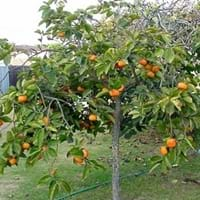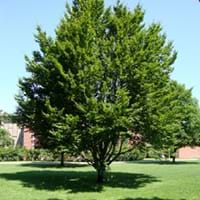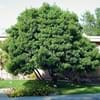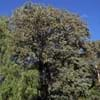Life Span
Perennial
Perennial
Origin
China, Japan
North America, United States, Northeastern United States, Mid-Atlantic United States, Southeastern United States, South-Central United States, Texas, Canada
Types
Not Available
Japanese beech, European beech
Number of Varieties
Not Available
Habitat
Subtropical climates, Warmer regions
low mountains, shaded woods
USDA Hardiness Zone
6-10
4-9
Sunset Zone
H1, 6, 7, 8, 9, 12, 14, 15, 16, 18, 19, 20, 21, 22, 23, 24
1a, 1b, 2a, 2b, 3a, 3b, 4, 5, 6
Habit
Pyramidal
Oval or Rounded
Flower Color
Light Yellow
Yellow green, Tan
Flower Color Modifier
Bicolor
Bicolor
Fruit Color
Orange
Sandy Brown
Leaf Color in Spring
Green
Green
Leaf Color in Summer
Green
Green, Dark Green
Leaf Color in Fall
Yellow, Burgundy, Orange Red
Gold, Tan, Sandy Brown
Leaf Color in Winter
Not Available
Not Available
Leaf Shape
Ovate
Lanceolate
Plant Season
Summer, Fall, Winter
Spring, Summer, Fall, Winter
Sunlight
Full Sun, Partial Sun
Full Sun
Type of Soil
Clay, Loam
Loam, Well drained
The pH of Soil
Acidic, Neutral
Acidic, Neutral
Soil Drainage
Well drained
Average
Tolerances
Not Available
Dry soil, Full Sun, Salt and Soil Compaction
Where to Plant?
Ground
Ground
How to Plant?
Seedlings, Stem Planting
Seedlings, Stem Planting
Plant Maintenance
Medium
Medium
Watering Requirements
Requires watering in the growing season, Water occasionally
Needs very little water, occasional watering once established
In Summer
Lots of watering
Lots of watering
In Spring
Moderate
Moderate
In Winter
Average Water
Average Water
Soil pH
Acidic, Neutral
Acidic, Neutral
Soil Type
Clay, Loam
Clay, Loam, Sand
Soil Drainage Capacity
Well drained
Average
Sun Exposure
Full Sun, Partial Sun
Full Sun
Pruning
Remove damaged leaves, Remove dead branches, Remove dead leaves, Requires very little pruning
Cut upper 1/3 section when young to enhancegrowth, Prune to control growth, Remove damaged leaves, Remove dead branches, Remove dead leaves
Fertilizers
General garden fertilizer
Compost, Fertilize the soil before planting
Pests and Diseases
Mealybugs
Aphids, Beech bark disease, fungus, Mildew, Scale
Plant Tolerance
Not Available
Drought, Full Sun, Salt and Soil Compaction
Flowers
Insignificant
Insignificant
Flower Petal Number
Single
Not Available
Foliage Texture
Medium
Medium
Foliage Sheen
Glossy
Glossy
Self-Sowing
Not Available
Yes
Attracts
Birds
Bees, Birds, Hummingbirds, songbirds
Allergy
no allergic reactions
Itchiness, Pulmonary oedema, Sinuses
Aesthetic Uses
Not Used For Aesthetic Purpose
Showy Purposes
Beauty Benefits
Not Available
Speed hair growth, Stops hair loss
Environmental Uses
Air purification
Air purification, Shadow Tree, Wild areas
Medicinal Uses
No Medicinal Use
Antioxidants, Antiseptic, Digestion problems, Headache, Kidney problems, Pain killer
Part of Plant Used
Fruits
Leaves, Sap, Wood
Other Uses
Culinary use, Used As Food
Decorative veneers, flooring, paneling, Grown for shade, Used as firewood, Used as Ornamental plant, Used for its medicinal properties, Wood is used for making furniture
Used As Indoor Plant
No
No
Used As Outdoor Plant
Yes
Yes
Garden Design
Feature Plant, Fruit / Fruit Tree, Topiary / Bonsai / Espalier
Feature Plant, Shade Trees
Botanical Name
DIOSPYROS kaki 'Fuyu'
FAGUS sylvatica
Common Name
Asian Persimmon, Fuyu Persimmon, Japanese Persimmon, Kaki
European Beech
In Hindi
Fuyu ख़ुरमा
यूरोपीय बीच
In German
Fuyu Persimmon
Rotbuche
In French
Fuyu Persimmon
Hêtre commun
In Spanish
Fuyu caqui
Fagus sylvatica
In Greek
Fuyu Λωτός
Ευρωπαϊκή οξιάς
In Portuguese
Fuyu Persimmon
Faia-europeia
In Polish
Fuyu Persimmon
Buk zwyczajny
In Latin
Persimmon Impromptus
Europae fagi
Phylum
Tracheophyta
Magnoliophyta
Class
Magnoliopsida
Magnoliopsida
Family
Ebenaceae
Fagaceae
Clade
Angiosperms, Asterids, Eudicots
Angiosperms, Eudicots, Rosids
Tribe
Not Available
Not Available
Subfamily
Not Available
Not Available
Number of Species
Not Available
Importance of Fuyu Persimmon and European Beech
Want to have the most appropriate plant for your garden? You might want to know the importance of Fuyu Persimmon and European Beech. Basically, these two plants vary in many aspects. Compare Fuyu Persimmon and European Beech as they differ in many characteristics such as their life, care, benefits, facts, etc. Every gardener must at least have the slightest clue about the plants he wants to plant in his garden. Compare their benefits, which differ in many ways like facts and uses. The medicinal use of Fuyu Persimmon is No Medicinal Use whereas of European Beech is Antioxidants, Antiseptic, Digestion problems, Headache, Kidney problems and Pain killer. Fuyu Persimmon has beauty benefits as follows: Not Available while European Beech has beauty benefits as follows: Not Available.
Compare Facts of Fuyu Persimmon vs European Beech
How to choose the best garden plant for your garden depending upon its facts? Here garden plant comparison will help you to solve this query. Compare the facts of Fuyu Persimmon vs European Beech and know which one to choose. As garden plants have benefits and other uses, allergy is also a major drawback of plants for some people. Allergic reactions of Fuyu Persimmon are no allergic reactions whereas of European Beech have Itchiness, Pulmonary oedema and Sinuses respectively. Having a fruit bearing plant in your garden can be a plus point of your garden. Fuyu Persimmon has showy fruits and European Beech has showy fruits. Also Fuyu Persimmon is not flowering and European Beech is not flowering . You can compare Fuyu Persimmon and European Beech facts and facts of other plants too.





